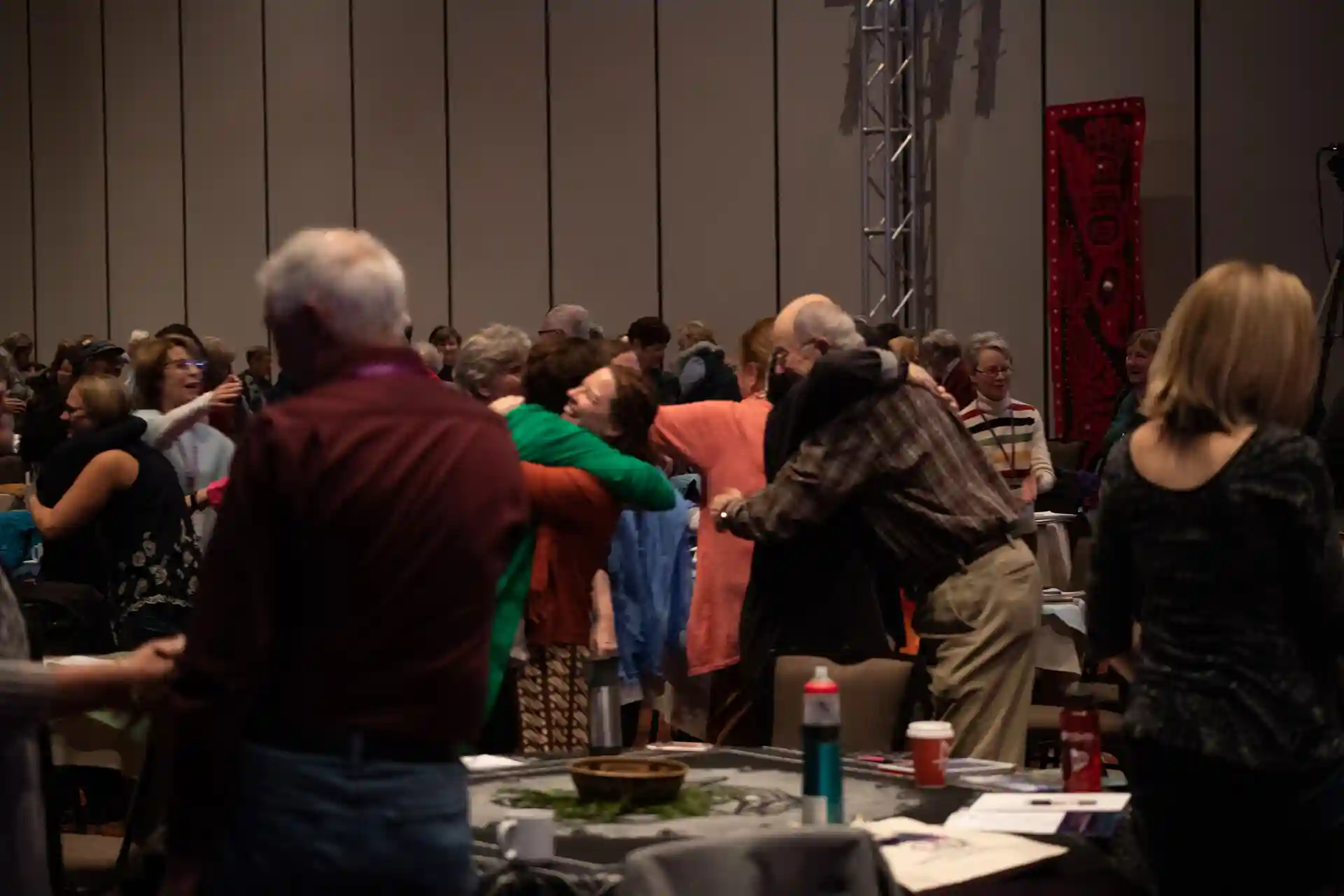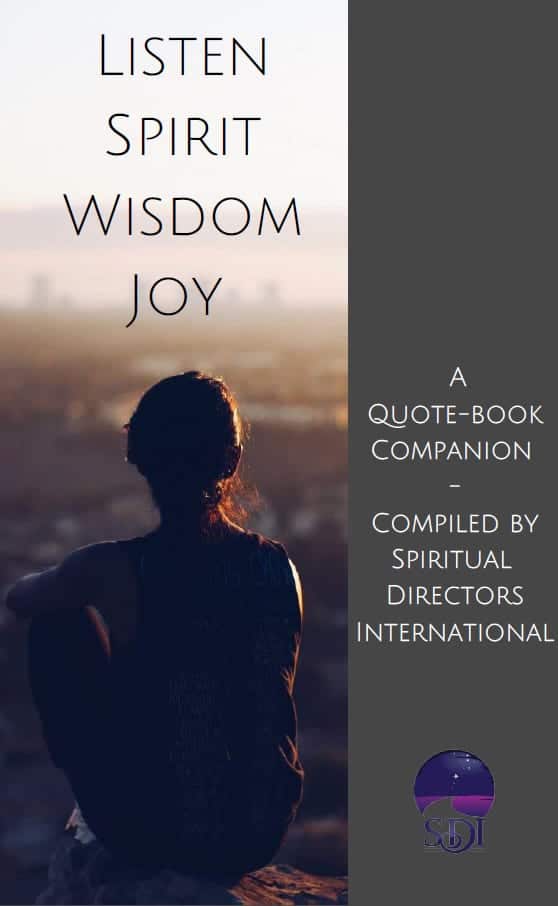By Dr. Janice Lundy, DMin, MPC
Many years ago when I was training to be a spiritual director, the kindly Sister who led the program made it very clear to us that spiritual guidance over the telephone was not acceptable. More specifically, that good spiritual guidance could not happen unless two people were face-to-face and the “third chair” was physically present in the room.
Today, I know better and do offer spiritual direction via Zoom or Skype or over the telephone. I have found it to be a very useful modality benefiting some seekers, in some situations, but not all. Without a doubt, it can have a providential outcome as I have experienced with seekers outside the U.S. (my home), homebound seekers, and those whose lives present varied and difficult circumstances in terms of travel, child-care needs, or work schedules. Grace can move through the ether across telephone lines and satellite networks. Who are we to say it can’t?
Long-distance spiritual direction does require openness, deep intention, prayerfulness and discernment on the part of the guide and the seeker. It may seem vague to say that distance direction depends on the people having the conversation, but it truly does. If you are interested in exploring it for yourself, my advice is to try it and see. It works well when it works and then sometimes it doesn’t. You will not know for yourself until you dive in.
This is what I’ve learned about offering long-distance spiritual direction:
1. There should be a conversation with the seeker first about what to expect and how this type of call will work. She or he needs to guarantee they can be in a quiet and relaxed setting where they will not be interrupted, calls forwarded, and computer put away; a space where prayerfulness can be experienced. I once had a seeker try to convince me that she could experience a session while driving home from work. Of course, I told her this would not work. Nor was it safe. It is up to us as guides to set wise perimeters around the conversation.
2. The session will only be as prayerful as the space I hold for it. This means, just like with an in-person session, I must prepare myself before the meeting occurs. I sit in silence, invite spaciousness and lean into my heart. I prepare my inner landscape to be open and receptive. Grounded. I encourage the seeker to do so as well.
3. Be prepared for glitches in technology for they will occur. Lay out some guidelines ahead of time about what the two of you will do if you lose connection. Who will call whom back? This saves time and frustration.
4. Begin in silence, just like in-person. This time of quiet over the phone (or Zoom) can be very beneficial. It’s amazing to me how the silence in this unique setting feels deeply sacred and connective. The seekers I journey with agree, and love this special time together, often thanking me for initiating it because they may have felt rushed or disjointed before the call began. You can end the call with silence as well, or a prayer of gratitude for this gift of connection.
5. Be aware that some individuals will have a difficult time at first with conversing via telephone or the internet. They may feel uncomfortable with silence, filling the gaps with words. Discuss this together. To adopt a contemplative stance—listening, waiting—is something to work on.
6. You will step on each other’s words. This will happen, be assured of it (unless you are using Skype where you can see one another). Bring this issue to the conversation and discuss what you can do about it. What I’ve discovered is that once you have a session or two with an individual, you begin to find a rhythm, and things flow more easily.
7. As the guide, pause often, take several breaths and drop back into spaciousness. This is just like during an in-person session. One of the dangers of guidance over the telephone is, I believe, how we may tend to get heady—processing words—thinking our way through responses because visual clues may be absent. At any given moment, when in doubt, we can drop into our sacred center and plug back into the Divine as we understand it. Let us never forget who is doing the guiding here.
8. Ask for feedback. After the session, ask the seeker how this worked for them. Did they feel comfortable, relaxed, prayerful? Or was it stress-inducing? Transparency in this conversation is key because any spiritual guidance session should be about serving the seeker well. And what about you? How did you feel communicating wth this modality? Shall the two of continue on in this way, giving it a little more time to see if the kinks get worked out? Or try something else? Long-distance spiritual guidance is simply a tool, one of many, and not every tool works in all situations, or for all people. In truth, I have had some seekers say, “I really have to be sitting in the same room with someone.” Or, you will discover that long-distance direction may not work with certain individuals at all. They simply do not have the capacity to pause or be comfortable with space for silence on the phone. They are used to talking non-stop and do not listen well. This is fine and good to acknowledge. At this point, I don’t hesitate to recommend that we try to find a spiritual guide in their area instead. (On a personal note, keep in mind that each of us takes in and presents information differently. I find that I prefer telephone sessions rather than Skype sessions. Over years of phone sessions, my listening is deeper. I am more attuned to the tone of voice, emotion, to the spaces between words. The conversation feels more intimate to me, but this is just me, my style. I find myself often distracted by the visual of Skype, attuned more than I like to admit to the seeker’s setting, house décor, presence of pets, etc. We each must find what works best for us as well as for the seeker.)
9. If you request a fee for your services, or ask for a donation, provide options about how this can be handled. A check sent ahead of time? An invoice sent via Pay Pal? I use both methods depending on the person’s preference. Come up with a mutually satisfying solution.
10. One of the reasons I enjoy offering spiritual guidance over the phone is that it inevitably invites us deeper. There is a growing edge to our listening and presence. Each of us can learn to be better listeners; to listen more intently, heartfully, prayerfully—no matter what.
As I write this, I am thinking about Myra, a teacher from Australia. We have never met but have been journeying together for nearly four years. Our spiritual friendship is deep and our sessions always fruitful. Out of necessity, we have found our way through long-distance spiritual guidance together. We started out using visual Skype (her choice), which ultimately made her uncomfortable. She was often emotional and felt embarrassed shedding rivers of tears in front of me. We switched to audio Skype (great for international calls), and if I listen carefully, I can hear her sniffling, which means she could be crying, which is cue enough. I know we have stepped into the territory of the sacred heart together.
Over time, we have become comfortable with the spaces between our sentences. These feel like holy ground and we can companionably rest in them. Myra has often voiced how meaningful this is for her, to rest in the Silence together. Despite the fact that she is on one continent and I am on another, Presence is here. Grace whooshes through the airwaves, comforts and blesses us. We are grateful for the technology that allows us to be still and know … together.
I welcome your thoughts and stories about long-distance guidance. Conversation by conversation, we grow.

Dr. Janice Lundy, DMin, MPC is the co-founder and director of the Spiritual Guidance Training Institute which provides education and certification in interfaith and interspiritual direction. She is an interfaith/interspiritual director herself, the author of several spiritual formation books including Your Truest Self and My Deepest Me, and the creator of the Pure Presence® method of compassionate listening. She is also a member of the SDI Coordinating Council and is currently Visiting Professor of Spiritual Direction at The Graduate Theological Foundation. She resides in Michigan, USA.




